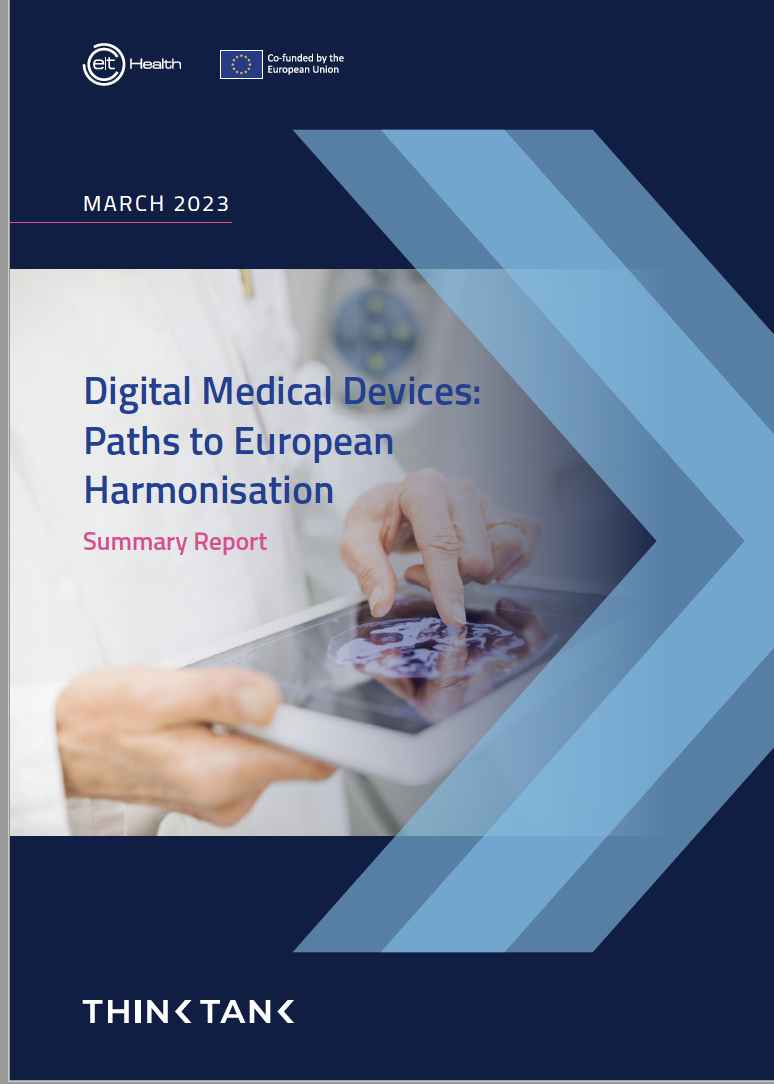As the growing burden of chronic disease and healthcare expenditure place increasing pressure on our health systems, digital health transformation is needed to ensure the sustainability of European healthcare. During the COVID-19 pandemic, when resources were stretched thinner than ever, we saw how digital health and care can improve access to health services, enhance the quality of healthcare and make its delivery more efficient.
Read on as we discuss digital transformation in healthcare and summarise the findings of our new report, “Digital Medical Devices: Paths to European Harmonisation.”

Digital health transformation
To drive digital health transformation and make digital health more accessible for all, EIT Health is working to facilitate the widespread uptake of digital medical devices (DMDs) across Europe. This is one of four flagship initiatives that our work is focused on. Learn more about our focus areas.
Digital health apps have enormous potential to improve population health and patient satisfaction with care. But innovators face significant regulatory, financial, technical, and cultural barriers when trying to implement their solutions across Europe’s fragmented national healthcare systems.

We are looking at ways to remove these barriers and harmonise the EU landscape for digital health and care. As starting point, EIT Health Think Tank set about investigating Germany’s pioneering model for introducing digital health apps on prescription.
Since before the pandemic, Germany has been working to integrate digital health applications into standard care pathways under universal health coverage. This initiative, known as the DiGA Fast-track, sparked similar efforts across other European countries to increase digital health application adoption.

Increasing the uptake of digital innovations in healthcare
Between September 2021 and November 2022, EIT Health organised a series of roundtable discussions across Europe. These brought together experts and key stakeholders from the worlds of healthcare, medical device regulatory affairs, academia, and business. Together, they discussed the German DiGA model and its potential to inspire digital health regulatory frameworks in different EU countries.
Our report consolidates the findings of these roundtables to offer a pan-European overview on the state of the digital health and care transformation in individual Member States. It also makes recommendations on how we can harmonise the implementation of digital innovations in healthcare.
Publications
Digital Medical Devices: Paths to European harmonisation
Short on time? Here is a summary of our key findings:
- The EU has been stepping up its policy and legislative agenda to reach its objectives for digital sovereignty, including in digital health and care.
- EU Funding for post-pandemic recovery comprises levers for a digital transformation of healthcare.
- A new regulatory framework for digital health and care has emerged in Europe, kickstarted by Germany’s introduction of the DiGA Fast-track in 2019.
- The pace of implementation has been slow. In the first three years, only 15 DiGAs achieved permanent listing. Prescription of DiGAs has also been slow to pick up.
- Health digitalisation is progressing at different paces across the EU, despite a universal surge in adoption of digital health solutions during the pandemic.
- DiGA-like initiatives are mushrooming across Europe. Numerous countries are introducing their own assessment and funding frameworks for patient-facing digital medical devices (DMDs).
- A digital health and care divide is emerging. In some countries, provisions are yet to be made for a systematic introduction of DMDs. This means disparities in European citizens’ access to healthcare could deepen.
- DMDs call for a new regulatory and financing approach, to avoid a competitive disadvantage for Europe.
- There is huge potential to unify the EU market for DMDs and facilitate the penetration of solutions across national borders by defining common quality criteria and evidence standards. The work of the EIT Health-coordinated European Taskforce for Harmonised Evaluation of Digital Medical Devices is an important first step towards achieving a pan-European understanding.
- Data is the foundation of digital health innovation: Digital health technologies require data at every stage of their life cycle.
- Perspectives for single market access for DMDs: There are a range of possibilities for European integration on digital medical devices. Whatever the chosen level of harmonisation, common standards should be implemented in a way that helps rather than hinders the weakest countries in this area.
Enacting Change
As well as providing thought leadership around digital transformation in healthcare, we are developing new products and services that deliver cutting-edge innovations to transform healthcare. Discover some of our work in this area.
